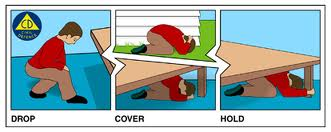From standing in a doorway when the shaking starts to packing only three days’ worth of food, here’s what to believe in the lore-filled world of earthquake preparation.
In 1991 a much-viewed TV clip showed a reporter and film crew sheltering from a Kansas tornado under a highway overpass. A National Weather Service study later claimed that numerous deaths resulted from the clip’s erroneous message that sheltering from a tornado under an overpass was a good idea.
So what about earthquakes? Are there similar popular misconceptions about safety and preparedness? Geological experts were asked by BCAA to bust the biggest seismic myths.
Myth 1 “It won’t happen”
This one at least seems to be fading as more people get the message that a big West Coast quake is certain to occur eventually. But according to Jerry Thompson, author of the book “Cascadia’s Fault” (Counterpoint Press), it was not that long ago that even scientists were blasé about coastal seismic danger. “It was thought that no quake had happened along the Cascadia Fault in recorded history,” he says. “Now we know by studying Japanese tsunami records that a massive quake happened in 1700, and core samples from the sea bed show we are due for another.”
Myth 2 “Shelter under a doorway? Or run outside?”
The idea that a doorway is the best place to be has been widely spread. Not true, according to Doug Araki, president of WPS Disaster Management. “Standing in a doorway you’re more likely to be hit by debris,” he says, “or even the door. Drop, cover and hold’ is the best strategy,” recommends Araki. Dropping down and taking shelter under a heavy desk or table and then holding on to something heavy is much safer. As for escaping outside, it might work in a single family dwelling neighborhood but is not advised in a high-rise area. “There will be buildings shedding glass and stone,” Araki says. “Better to stay inside when in a tall building.”
Myth 3 “I’ll be fine if my house/building doesn’t fall down”
Unlike Haiti, building codes in Western Canada are strict. Building collapses could definitely happen but in general, while your home may suffer damage, it’s your stuff that’s more likely to physically hurt you. “Nonstructural items – lights, ceiling tiles, cabinets, large appliances that are not bolted down – are all potential weapons,” Araki says. Bookcases and mirrors falling from the wall and causing injury are also a concern.
Myth 4 “You need 72 hours of emergency supplies”
That recommendation has been shown by recent events, particularly the Japanese quake and tsunami in 2011, to be inadequate. “One week is a better estimate, and possibly beyond that,” Araki says. “Bridges and tunnels could be out and resources overwhelmed.”
Myth 5 “This is going to ruin my life”
“The Japanese quake and tsunami killed about 16,000 people,” Thompson says. “That’s terrible, but millions of people lived in the area. The vast majority will survive. The main question is not ‘Will I be killed?’, but ‘Will I survive the aftermath?’ Have a plan – three plans, one for home, one for work, and one for play. Where will you go? Where will you meet with family? Having a plan gives you peace of mind so you don’t have to obsess about it.”
For more information on earthquakes, check the following sample website:



